26 Best Workout Apps in 2025

Discover the best workout apps of 2025 to help you stay fit, track progress, and crush your goals anytime, anywhere.
Choosing the right workout app can feel like wading through an endless list of programs, trackers, and promises, especially when you read reviews about the Best Fitness Apps. Do you need guided strength sessions, quick HIIT workouts, yoga classes, a calorie tracker that syncs with your wearable device, or a plan that accommodates busy days?
This guide cuts through the noise and shows which workout apps align with real goals and routines so that you can make informed decisions with confidence. Expect clear comparisons of workout plans, coaching features, progress tracking, home and gym options, and how each app helps you stay on track.
GetFit AI, an AI fitness app, helps you compare options and gives simple, personalized recommendations for workouts, schedules, and apps so you find the best fit and stick with it.
Summary
- The market is broad and specialized, not one-size-fits-all, with 26 apps reviewed that cover everything from equipment-free circuits to GPS route tracking and AI-driven coaching. Therefore, pick based on the training modality you actually need, rather than relying on feature hype.
- Retention rates collapse quickly, with over 50% of users abandoning apps within the first month and only 25% still using them after three months, making the first 21 days of onboarding the most critical design window.
- Consistent tracking matters for outcomes. Users who log workouts with apps are 50% more likely to achieve their fitness goals, showing that recording loads, reps, and effort converts activity into measurable progress.
- Personalization drives adherence; 75% of users prefer apps with personalized plans, and many report a roughly 30% increase in workout consistency when plans match their time, gear, and history.
- Weak strength logging creates real leaks in progression, and a six-week pilot with 120 participants showed athlete-designed, provenance-backed templates increase trust and longer retention compared with generic class libraries.
- Motivation design and micro-goals move the needle, with 60% of users reporting improved motivation from workout apps and short, 20-minute wins reducing early dropoff in week two.
- This is where GetFit AI fits in; the AI fitness app addresses retention and fragmentation by centralizing athlete-sourced blueprints, automated scaling rules, and exportable training history.
26 Best Workout Apps in 2025
The 26 apps span every reasonable way people train today, from machine-tethered cardio and GPS-based route logging to short, equipment-free circuits and AI-driven, celebrity-inspired coaching. You should think of the list as a toolkit. Some apps give granular tracking for serious athletes, others deliver motivation and production value, and a few now combine adaptive AI with meal plans and real-time feedback.
1. GetFit AI

GetFit AI is a transforming fitness app that leverages advanced artificial intelligence to create highly personalized workout and nutrition plans. The app utilizes innovative AI Body Scan technology that instantly analyzes a user’s physique from a simple photo, estimating key data such as gender, age, height, and weight to tailor daily workout routines and meal plans. Whether your goal is fat loss, muscle building, or overall fitness, GetFit AI continuously adapts to your progress and lifestyle, providing scientifically backed guidance without guesswork.
Users can choose from a range of workouts, including bodyweight exercises, strength training, and cardio sessions, all designed to evolve as they improve. The app also provides weekly nutrition plans with detailed macronutrient breakdowns and easy-to-follow recipes, making a holistic fitness approach more accessible and manageable. Data privacy is prioritized, with images securely processed and then deleted. GetFit AI also stands out by allowing users to train with virtual versions of legendary athletes, such as Arnold Schwarzenegger, Kobe Bryant, and Serena Williams, offering motivational chat and workout customization inspired by their routines.
Features
- Instant AI Body Scan using computer-vision technology
- Custom daily workout plans adapting to user progress
- Personalized nutrition plans with portion sizes and recipes
- Options for bodyweight, cardio, and gym-based workouts
- Secure data handling with privacy protection
- Virtual coaching experience featuring AI versions of famous athletes
- Suitable for beginners to advanced users
- Available for iOS with a free download and trial options
Pros of GetFit AI
- Personalized workout plans created via AI Body Scan to suit individual body metrics and goals.
- Real-time workout adaptations based on progress and feedback for continual challenge
- Integrated nutrition planning with detailed portion and recipe guidance
- Virtual training with AI renditions of famous athletes for motivation
- Comprehensive tracking of fitness activity, ensuring objective progress insights
Best For
- Individuals seeking a fully customized fitness and nutrition app
- Users wanting AI-driven, adaptive workout programming
- Those motivated by celebrity-inspired virtual coaching
- People prefer a holistic health app combining exercise and diet
- Beginners looking for an easy setup and progress tracking
2. Future
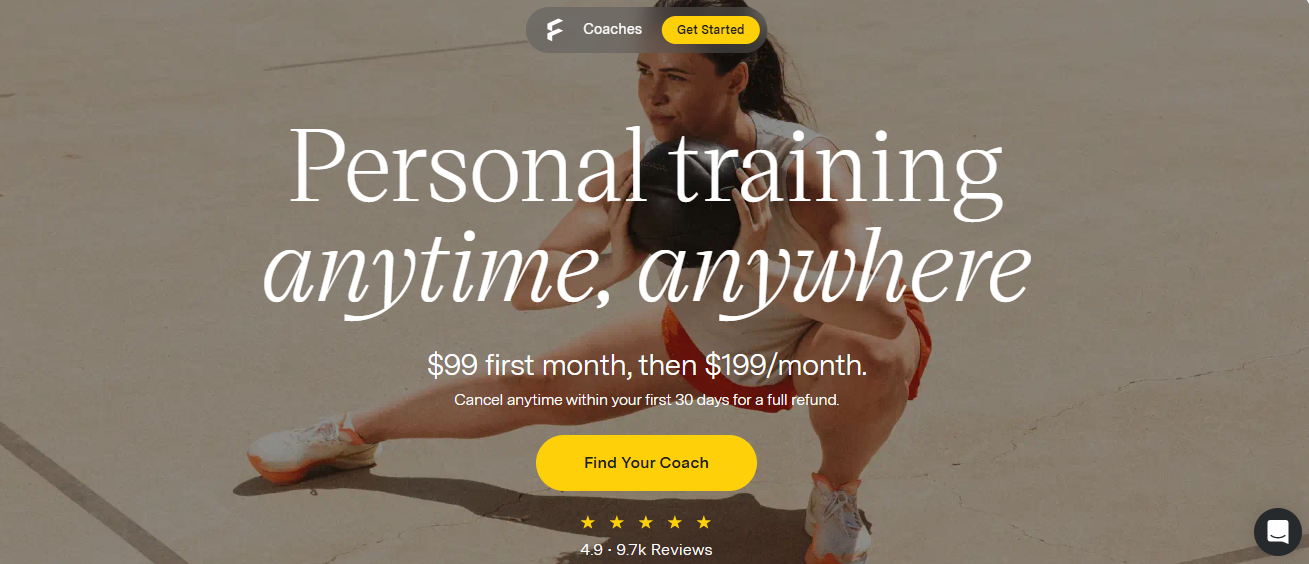
The future is ideal for beginners seeking personalized workout plans and direct coaching. Unlike generic fitness apps, Future pairs you with a real coach who customizes workouts based on your fitness level, goals, and available equipment, making it feel close to having a personal trainer remotely. You can communicate regularly with your coach, including sharing videos to ensure proper form and receive tailored guidance. While the subscription is premium-priced, it offers high accountability and customization, making it a worthwhile alternative to in-person personal training or expensive gym memberships.
Features
- Authentic one-on-one coaching with workout customization
- Video submission for form correction
- Equipment-based workout planning
- Accountability through regular coach check-ins
- Programs include strength and conditioning options
3. Aaptiv
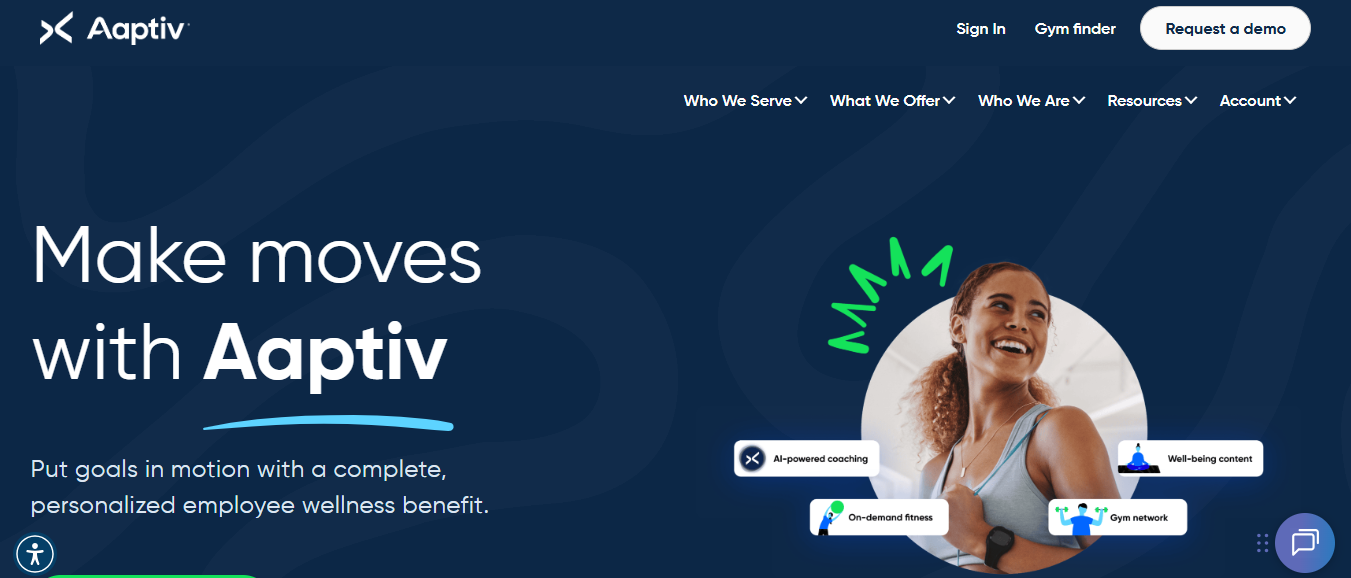
Aaptiv offers a diverse range of beginner workouts, primarily designed for at-home use, covering running, strength training, yoga, and more. The app features audio-guided workouts with clear cues and video demonstrations, allowing users to set their own pace, which benefits those new to fitness. It offers thousands of sessions and structured programs. However, it features moderate progression and shorter training cycles, making it a suitable option for those who are starting before transitioning to more advanced plans.
Features
- Over 8,000 workouts across multiple training styles
- Audio and video instruction for real-time guidance
- Running, strength, yoga, Pilates, and mindfulness programs
- Beginner-friendly pacing and progression
- Affordable subscription with a 7-day free trial
4. Caliber
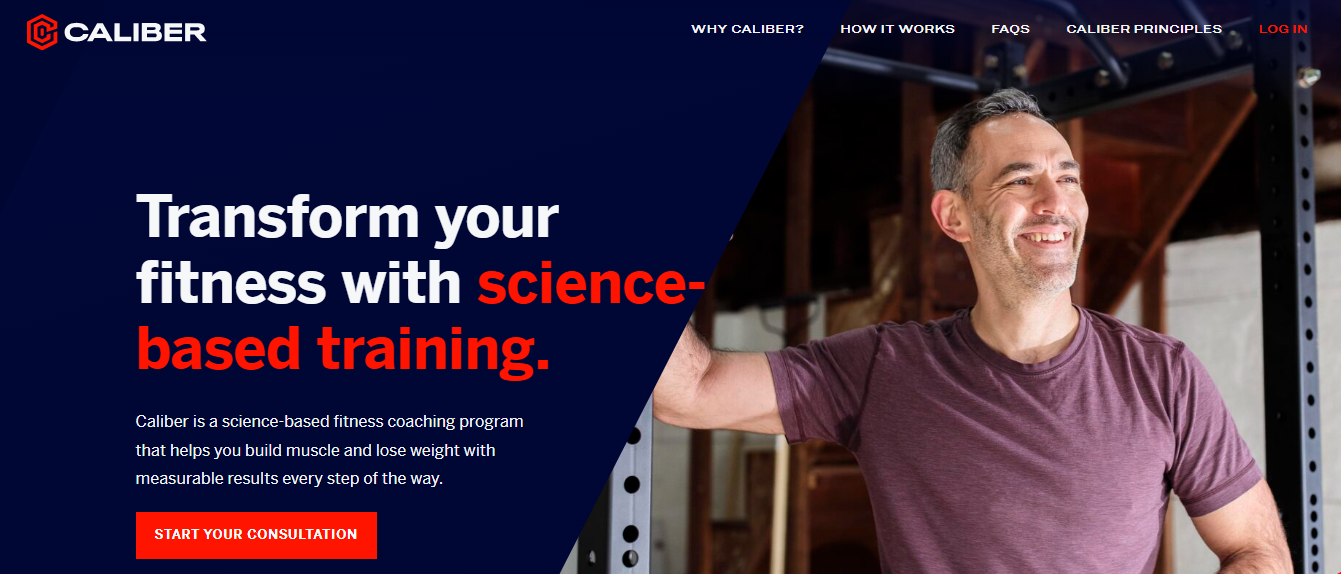
Caliber caters to all fitness levels and excels in strength training with an educational twist. It has three membership tiers: free access to an exercise library, group coaching at a low cost, and personalized premium coaching with detailed feedback on form videos. The app's lesson content covers basics like workout logging and weight selection, making it beginner-friendly while encouraging progression in strength training. Even free users benefit from high-quality instructional videos and customizable workout generation.
Features
- Extensive exercise library with over 500 movements
- Three-tier subscription options, including free access
- Instructional videos and form feedback via video
- Strength training-focused workouts with bodyweight and free weight options
- Educational modules on training fundamentals
5. Pliability

Pliability is a specialized app designed to enhance flexibility, mobility, and recovery, particularly suited for athletes and CrossFit enthusiasts. Its daily routines target a range of motion and pain reduction with thorough, athlete-oriented stretching videos. The app customizes mobility programs based on body scans, allowing users to concentrate on specific body parts or goals. The workouts tend to be longer and more advanced, making them ideal for those serious about enhancing performance and improving movement quality.
Features
- Daily updated mobility and flexibility workouts
- Body scanning to identify mobility restrictions
- Detailed instructional videos for stretches
- Programs tailored for athletic performance and recovery
- Available on major platforms with a free 7-day trial
6. MapMyFitness
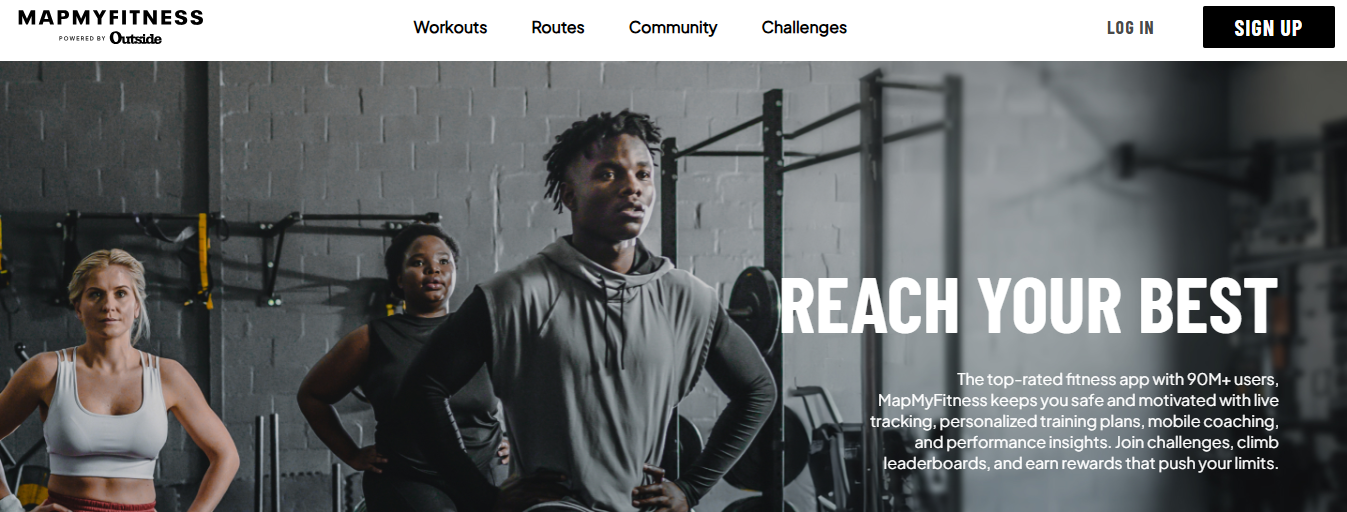
MapMyFitness stands out for runners looking for detailed tracking and analysis at an affordable price. It offers superior route mapping, cadence and heart rate analysis, custom interval workouts, and audio coaching. The app syncs effortlessly with popular fitness devices and apps, making it a comprehensive tool for monitoring running progress. Its usability and data-rich interface earn it high marks among runners, even rivalling other leading GPS apps.
Features
- GPS route tracking and custom interval workouts
- Cadence, heart rate, and power analysis (premium)
- Audio coaching and motivational cues
- Syncs with Garmin, Apple Watch, and other platforms
- Affordable premium option with some features always free
7. Nike Training Club
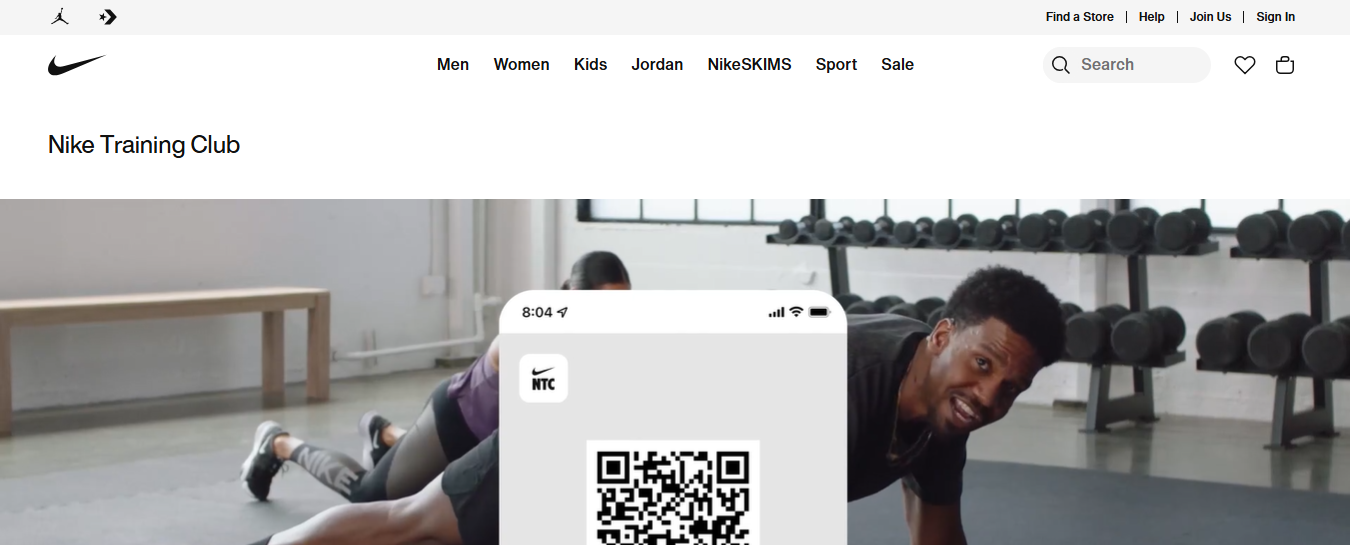
Nike Training Club is a free app ideal for beginners who want to start exercising with guided, instructor-led sessions. Users can filter workouts by style, duration, and the equipment available. Though it lacks personalized assessments, it offers accessible workouts in strength, HIIT, yoga, Pilates, and mobility. The app's user-friendly layout and motivational content make it an excellent entry point to fitness.
Features
- Hundreds of free, on-demand workouts
- Filter options by workout type and equipment
- Strength, yoga, Pilates, HIIT, and mobility sessions
- Audio and visual workout introductions
- Compatible with iOS devices requiring iOS 16.0 or later
8. FitOn
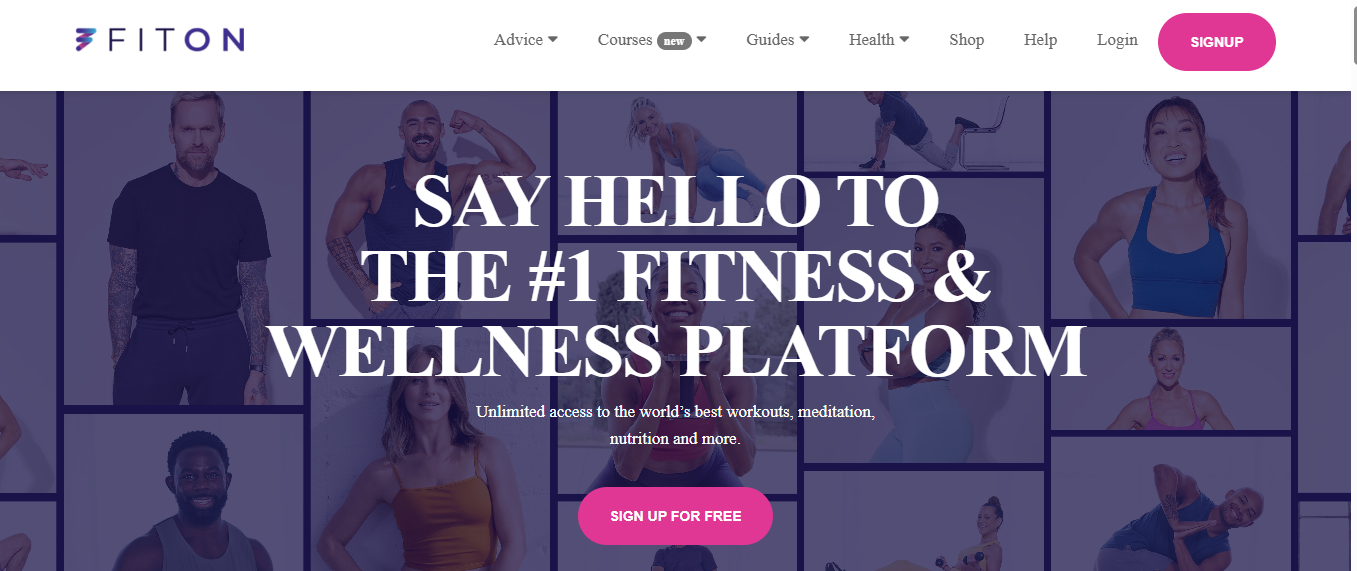
FitOn offers celebrity trainers and high-production workouts at an affordable price, making celebrity-style fitness accessible to users. The app boasts a diverse trainer roster, creating personalized programs. Its cinematic video quality and multiple camera angles offer a VIP workout feeling. The user can choose from numerous classes and adjust programs to meet evolving fitness needs, ensuring motivation and engagement.
Features
- Workouts led by celebrity trainers
- Personalized, adjustable programs
- Cinematic video production with multiple angles
- Variety of training styles and difficulty levels
- Affordable access to premium workout experiences
9. Peloton

Peloton is famous for its live workout classes accompanied by energizing music and high-quality instruction. The app allows users to filter by training style, instructor, and music genre, thereby enhancing the overall experience. Aside from cycling and treadmill workouts, Peloton offers a range of classes, including strength training, yoga, Pilates, barre, and meditation. It’s accessible across multiple platforms and devices, with subscription options varying by access level.
Features
- Live and on-demand workout classes
- Customizable filters for workouts and music
- Extensive fitness styles beyond cycling
- Multi-device compatibility, including Apple TV and Fire TV
- Trial period and tiered subscription pricing
10. iFIT
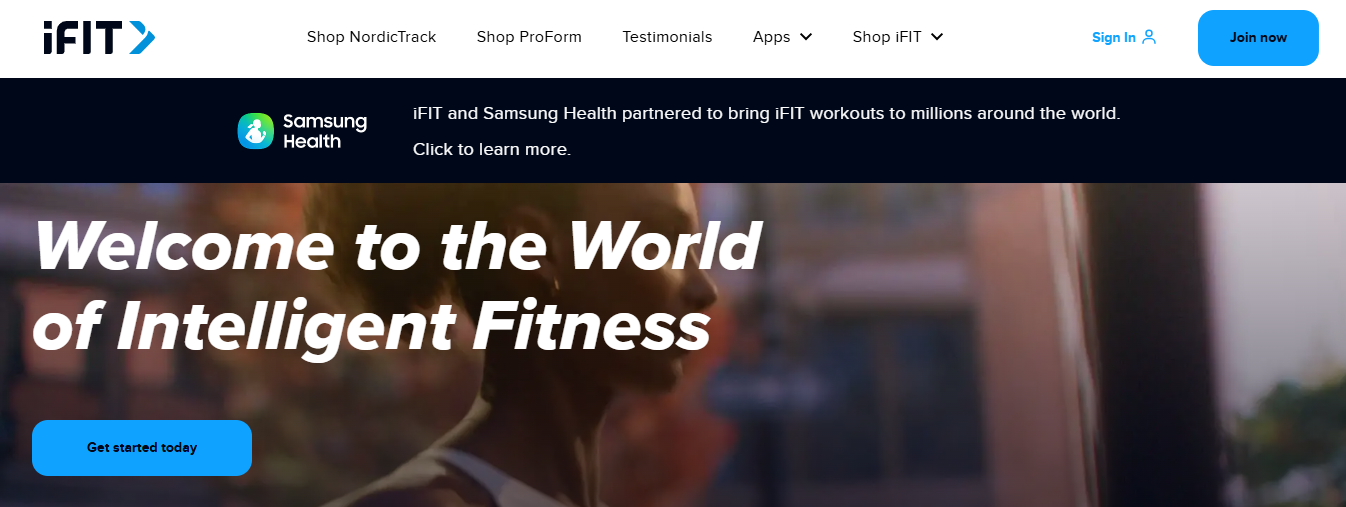
iFIT is a versatile fitness app ideal for cardio-focused beginners, particularly those using compatible cardio machines, such as ellipticals and treadmills. It offers a massive library of machine-specific workouts, as well as strength training, yoga, and Pilates. The app also includes scenic outdoor and studio-style sessions to keep workouts engaging. While setup can be tricky and app crashes occur occasionally, its broad workout variety makes it appealing.
Features:
- Extensive on-demand workout library (16,000+ sessions)
- Machine-specific and off-machine workouts
- Scenic outdoor and instructor-led options
- Family and individual subscription plans
- Includes strength, yoga, and Pilates training
11. Joggo

Joggo is tailored for new runners aiming to complete their first races, from 5K to marathons. This app serves as a digital running coach, creating personalized training plans tailored to each user's progress. It offers audio cues that guide pace, form, and breathing during runs. While the app lacks a live coach or community features, it still motivates users with push notifications and streak rewards. However, some may find the emphasis on weight loss off-putting.
Features
- Personalized adaptive running plans
- Audio coaching during runs
- Resources on recovery and nutrition
- Push notifications and workout streak tracking
- Suitable for treadmill and outdoor running
12. 5 Minute Pilates

This app focuses on quick Pilates sessions, ideal for those hesitant to start exercising. It offers five-minute workouts consisting of five Pilates moves, accompanied by clear instructions and visual demonstrations. The format encourages daily practice without overwhelming beginners, allowing gradual skill building and confidence over time.
Features
- Daily five-minute Pilates workouts
- Clear instructions and demonstrations
- Beginner-friendly pace and structure
- Encourages regular exercise habits
- Available on iOS and Android
13. Centr

Created by Chris Hemsworth and a team of health professionals, Centr offers a holistic fitness app with strength, HIIT, Pilates workouts, and comprehensive nutrition guidance. It focuses on lifestyle transformation with meal plans and healthy recipes curated by chefs. While not tailored for absolute beginners, it appeals to users seeking effective training programs and wellness support. The app also features meditation sessions that blend fitness with mental well-being.
Features
- Diverse workouts including HIIT, strength, and Pilates
- Nutrition plans with chef-crafted recipes
- Meditation and wellness content
- User-friendly interface
- Available on iOS and Android
14. Yoga for Beginners
Designed for beginners, this app creates personalized workout plans tailored to your age, weight, height, and fitness level. It features a 30-day beginner plan to introduce foundational yoga poses and practices, with intermediate and advanced levels available as users progress. This app offers a safe and low-impact way to gradually build strength and flexibility.
Features
- Personalized yoga plans for beginners
- 30-day starter program
- Progression to intermediate and advanced levels
- Low-impact workouts focusing on flexibility and strength
- Available on iOS and Android
15. 7 Minute Workout

This app is perfect for beginners who prefer short, effective workouts. Each session lasts just seven minutes and includes basic exercises like jumping jacks, lunges, and squats. The simplicity and time efficiency make it ideal for those just embarking on a fitness journey. Different difficulty levels ensure users can progress safely without risking injury.
Features
- Quick, 7-minute workout sessions
- Beginner-friendly with adjustable difficulty
- Simple exercise routines
- Easy-to-use design
- Available for iOS and Android
16. Beginners Gym Workout
An app tailored for novice weightlifters and gym-goers returning to fitness, offering a straightforward four-day plan focusing on different muscle groups. It includes an optional daily ab workout session to complement overall strength development. The plan is easy to follow and effective, making it a reliable choice for beginners needing structure.
Features
- Four-day workout plan targeting major muscle groups
- Optional daily ab workouts
- Simple, clear exercise guidance
- Suitable for weight training beginners
- Available for Android
17. Apple Fitness+
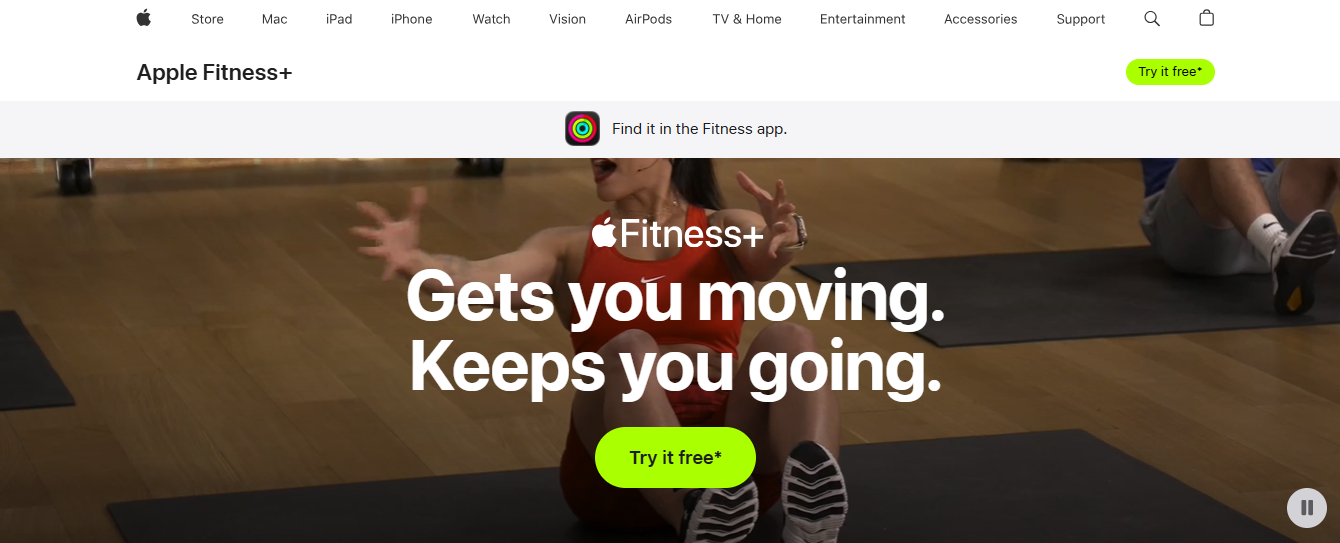
Apple Fitness+ excels with high-quality production, featuring multiple trainers per class who demonstrate exercise modifications, and a comprehensive workout library suitable for all levels. Its integration with the Apple Watch allows real-time biofeedback during workouts, enhancing motivation and performance monitoring. Users enjoy a variety of classes, including HIIT, yoga, core, and mindfulness.
Features
- High-definition workout videos
- Multiple instructors demonstrating modifications
- Apple Watch integration for live metrics
- Wide range of fitness styles and durations
- Subscription-based service on Apple devices
18. Home Workout

The Home Workout app is perfect for people who prefer exercising at home without needing gym equipment. It offers various training plans focusing on the upper and lower body, abs, and total-body workouts. Beginners, in particular, benefit from structured programs like the four-week challenge and meal planning support with shopping lists, making it a comprehensive at-home fitness tool.
Features
- Diverse workouts targeting specific muscle groups
- Four-week workout challenges for progression
- Meal planning and grocery list feature
- No equipment required
- Available for Android and iOS
19. Jump Rope Training

Jump Rope Training revives the classic cardio workout with designed workouts for beginners and pros. It features short sessions with visual demos, calorie counters, and intensity tracking scores. This app makes jumping rope accessible and practical, improving cardiovascular fitness with minimal equipment.
Features
- Short, intense jump rope workouts
- Visual exercise demonstrations
- Calorie burn and workout length metrics
- Suitable for all skill levels
- Free for iOS and Android users
20. PunchLab

PunchLab offers beginner-friendly boxing workouts led by expert coaches. The app tailors training plans based on your fitness level, weight, gender, and whether you have equipment like a punching bag. With features such as the PunchLab strap to track speed and power, it combines fitness with boxing technique for an engaging workout experience.
Features
- Boxing-based fitness workouts for beginners
- Personalized training plans
- Optional PunchLab strap for punch tracking
- Audio coaching and progress tracking
- Compatible with iOS and Android
21. Planet Fitness Workout App
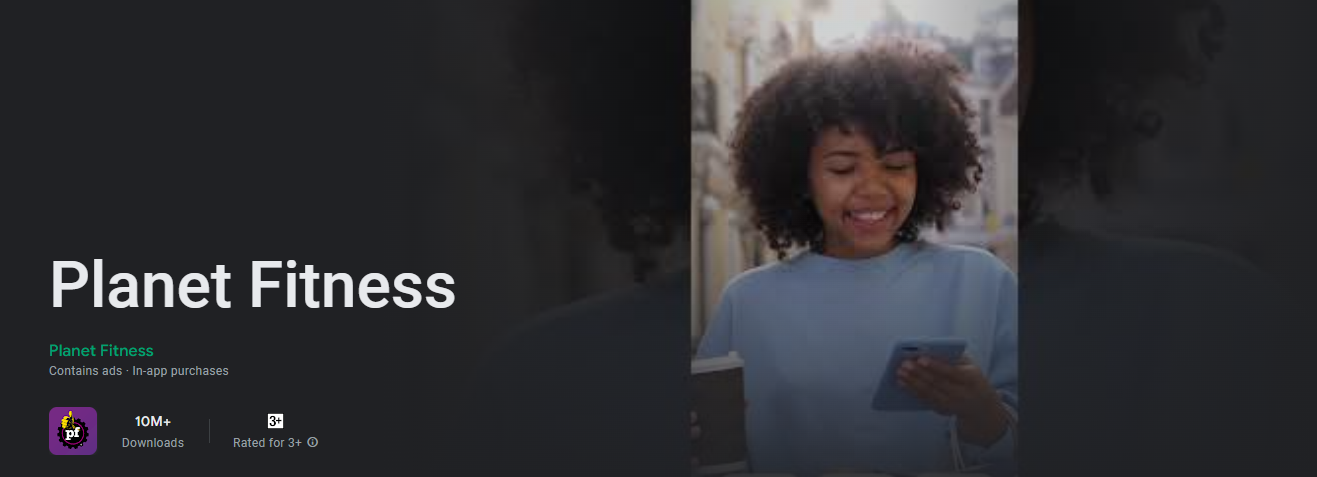
Planet Fitness To Go brings a gym atmosphere to your mobile device with beginner-friendly workouts and interactive coaching. It maintains the brand’s inclusive vibe with clear exercise guidance, encouragement, and a variety of workout options, including cardio, strength training, and yoga. The virtual coaching and progress tracking make it easy to stay motivated.
Features
- Interactive workout coaching
- Wide variety of beginner workouts
- Progress tracking and personalized plans
- Cardio, strength, and yoga training
- Smartphone-friendly version of gym experience
22. Lasta
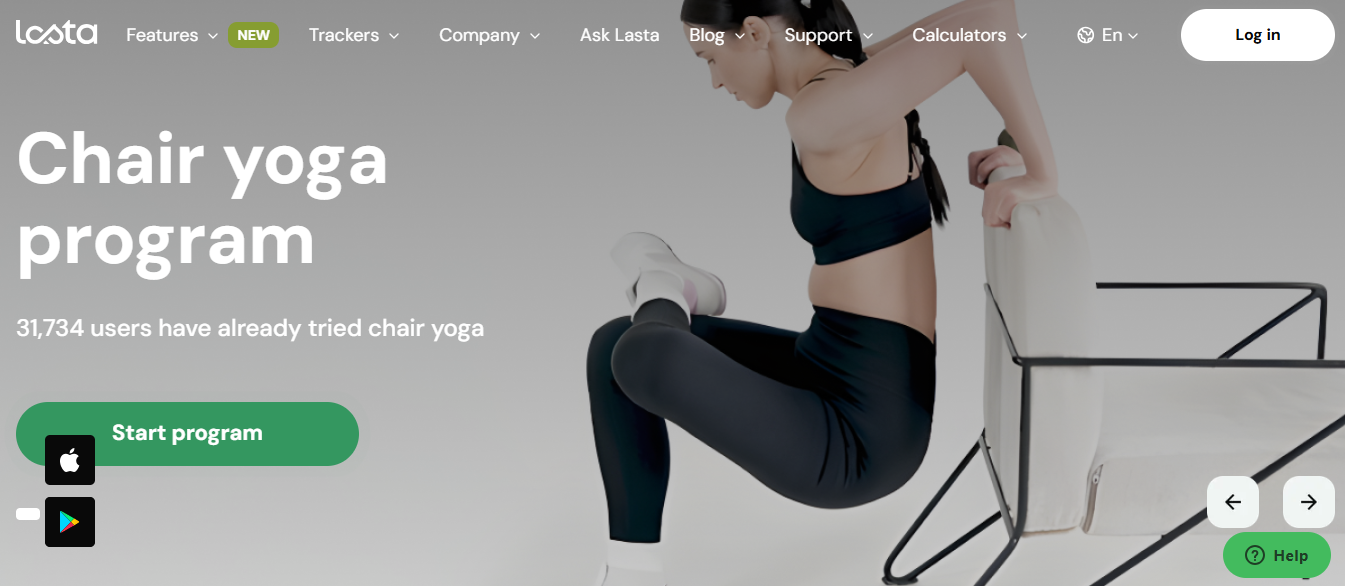
Lasta is more than a workout app; it acts as a motivational coach and community platform for beginners. After setting up your fitness profile, Lasta customizes plans and keeps you encouraged with positive mantras and progress tracking. Its user-friendly interface makes it accessible, and the app also integrates nutrition and mindfulness support for a holistic approach to fitness.
Features
- Personalized beginner workout plans
- Motivational support and mantras
- Progress tracking dashboard
- Nutrition and mindfulness tips
- Supportive online community
23. Shred App
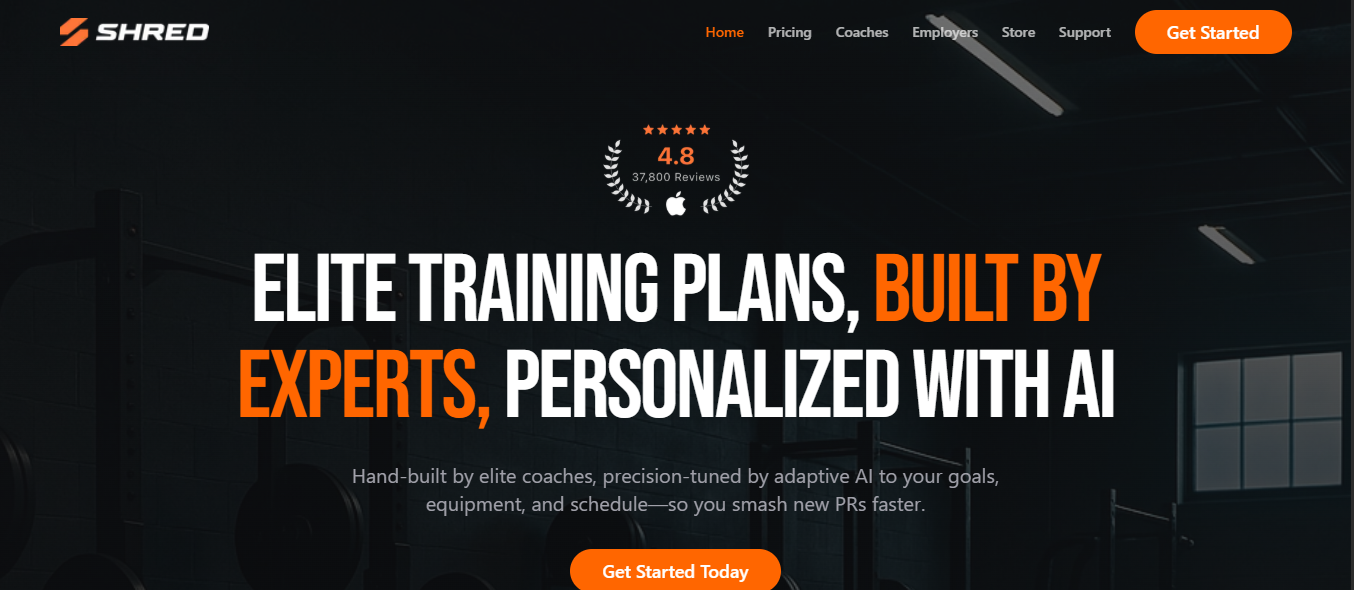
Shred App is an AI-powered personal training platform designed for users seeking dynamic, home-based workouts that adapt to their progress. Its intelligent algorithms create customized workout plans based on user input, fitness level, and goals, making it suitable for both beginners and more experienced exercisers. The app focuses on strength training and fat loss, utilizing AI to optimize routines and provide real-time feedback through voice cues and visual demonstrations. Its focus on personalized, data-driven workouts helps ensure steady progress and motivation.
Features
- AI-generated, personalized workout plans
- Real-time voice and visual coaching cues
- Data tracking for progress monitoring
- Focus on strength and fat loss exercises
- Compatibility with wearable devices for enhanced feedback
24. Alo Moves

Alo Moves is known not only for its trendy yoga and lounge apparel but also for delivering an impressive fitness and wellness app experience. Tailored specifically for women's fitness and overall wellness, Alo Moves offers a diverse range of classes, including barre, Pilates, yoga, HIIT, meditation, and quick ab workouts, with over 3,000 sessions filmed in beautiful, inspiring locations. The app lets you download workouts for offline use, which is great for practicing yoga anywhere without worrying about connectivity.
Features
- Extensive library of over 3,000 classes, including barre, Pilates, yoga, HIIT, and meditation
- Offline workout downloads for Wi-Fi-free sessions
- Workouts filmed in stunning, scenic locations
- Focus on wellness with meditation and self-care programming
- Available on iOS and accessible via web; currently no Android app, but can be used in browsers
25. Ladder
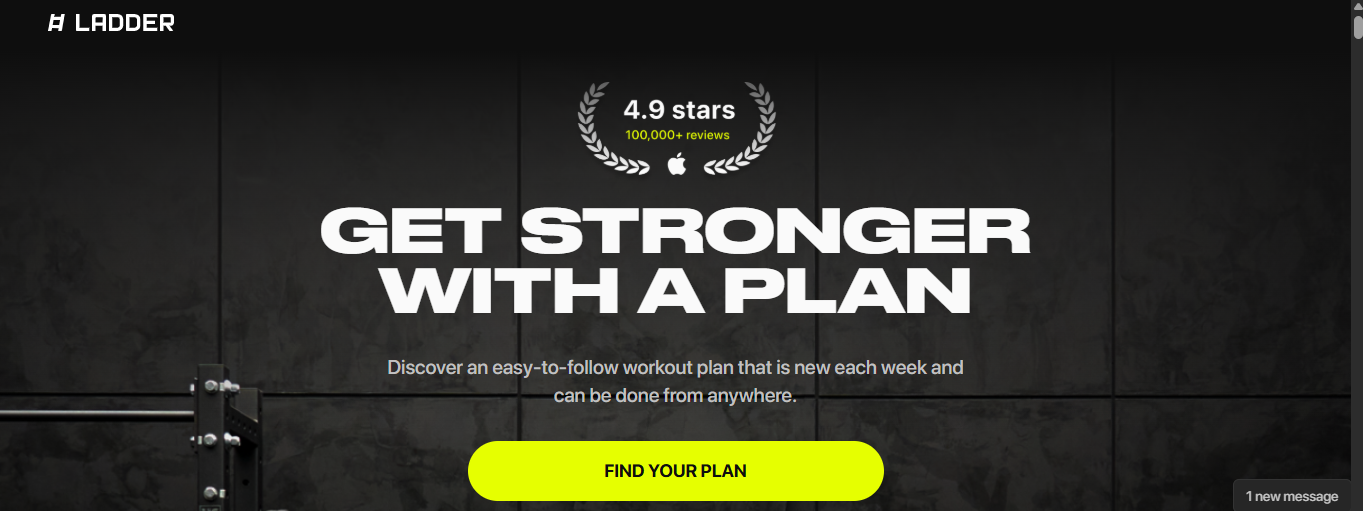
Founded in 2020, Ladder is a premier app for serious strength training, featuring a roster of expert trainers like Elise Young. It delivers structured, progressive overload workout programs suitable for use at home or in the gym, providing daily and weekly plans tailored to your goals, preferences, and available time. The ladder is excellent for advanced athletes but also valuable for beginners who want to build foundational strength skills and master weightlifting basics. The app integrates with Apple Watch, Spotify, and Apple Music, enhancing the workout experience.
Features
- Structured, progressive overload strength training plans
- Variety of modalities: yoga, strength, Pilates, HIIT, bodybuilding, kettlebells
- Integration with Apple Watch and music streaming apps
- 12-week prenatal program for safe pregnancy workouts
- Flexible workout control (pause, skip, rewind)
26. Strava

Strava is a premier workout app designed for runners, cyclists, and hikers who want advanced activity tracking rather than following along with workout classes. Serving serious athletes, it records essential statistics such as speed, pace, elevation, and route details by syncing with smartphones, GPS watches, heart rate monitors, and power meters. The app’s extensive global network enables users to upload or select routes from millions of shared paths, allowing for personalized and pre-planned workouts.
Features
- GPS-based tracking with detailed metrics (pace, route, elevation)
- Syncs with devices like Apple Watch, Garmin, and heart rate monitors
- Extensive database of global routes and user-created segments
- Social feed for sharing, kudos, comments, and community motivation
- Monthly challenges and competitions
The status quo that many of us accept, and how it quietly wastes results.
Most people pick apps because they are familiar or free, which is understandable and low-friction. That approach works initially, but as goals become more specific and progress stalls, fragmented tools create friction: training history is scattered across platforms, nutrition guidance is inconsistent, and adaptations to real-world stressors are manual and slow. Solutions like GetFit AI reframe that friction by centralizing biometric initialization with an AI Body Scan, delivering athlete-sourced routine blueprints, and automatically adapting daily workouts and meals, reducing the time spent guessing and increasing the time spent training deliberately.
A short analogy to make this practical
Choosing an app without checking how it tracks progress is like hiring a coach who never writes down your lifts: you leave each session hopeful, but weeks later, you cannot prove what changed. The correct tool records the work, explains why a session shifted, and helps you close the gap between intention and result.
That’s not the end of the story; the real question is what these differences actually mean for your routine and results.
That next part is where things get unexpectedly revealing.
Related Reading
- Best Fitness Apps
- How Many Pull Ups Should I Be Able To Do
- Average Bench Press By Age
- Average Grip Strength Male
- Average Bench Press
- How Much Does A Bench Press Bar Weigh
- Average Male Bench Press
- How Much Can The Average Man Bench Press
Benefits of Using Workout Apps
.jpeg)
Workout apps make training simpler and stickier, turning good intentions into consistent habits and measurable progress you can act on. They achieve this by reducing decision friction, delivering targeted feedback, and keeping you accountable in real-time.
What keeps you coming back to apps?
This is a behavior problem more than a fitness problem: motivation flags when choices multiply and early wins vanish. Apps alleviate choice overload by offering micro-goals, immediate rewards, and predictable sessions, making momentum the default. According to FitBudd, 60% of users reported improved motivation to exercise regularly due to workout apps; those small design moves matter, as they translate curiosity into a routine. From working with mixed-experience groups, a consistent pattern emerges: when the first sessions are capped at 20 minutes and focus on two clear outcomes, drop-off in two second week decreases, and confidence rises.
How does tracking change actual progress?
Tracking is not vanity; it is a diagnosis. When you log loads, reps, and perceived effort consistently, you can determine whether your program is adding the right stress or just noise. Apps make that visible with trend lines, session summaries, and flags for missed progression. That visibility explains why users notice better outcomes, and why, according to FitBudd, 45% of users experienced better tracking of their fitness goals with the help of workout apps. Think of it like a training log that not only records your lifts, but highlights when volume stalls, so you can intervene before a plateau becomes permanent.
What about personalization that actually helps?
Broad programs work until life complicates them. If your schedule shifts, your recovery is poor, or equipment changes, rigid plans break. The useful apps adapt: they scale intensity based on recent sessions, suggest swaps when equipment is missing, and sequence mobility before heavy lifts when soreness spikes. That constraint-based thinking is how real athletes train, and it’s how a digital coach should behave, adjusting the plan so fitness and life coexist.
Most people plan workouts by intuition, then wonder why gains are slow.
Most people assemble workouts from habit and hope because that method is familiar and requires no design work. That works early, but as the load accumulates, inconsistencies emerge: missed overload, uneven recovery, and blurred progress. Solutions like GetFit AI change this pattern by offering athlete-sourced blueprints, automated progression rules, and on-demand athlete persona coaching, allowing users to benefit from both the structure of a professional plan and the daily adjustments that eliminate guesswork and maintain consistency.
How do apps reduce injury anxiety while teaching form?
Fear of getting hurt stops more progress than time constraints. Apps that pair slow-motion tutorials, on-screen cues, and staged regressions let you build skill before you chase numbers. If technique is the priority, choose programs that require a baseline mobility check and then build strength across controlled ranges of motion. That sequence keeps early sessions safe and earns permission to add load later, which is precisely how competent coaches operate.
Why is this approach affordable and inclusive?
Affordability matters when people are trying to sustain habits over months and years, not just one sprint. Apps compress expert coaching into repeatable, low-cost sessions, eliminating scheduling friction and making high-quality guidance accessible to more people without the recurring costs of one-on-one training. The real return is consistency, as access and adherence produce more measurable improvement than sporadic premium sessions.
A short, human analogy
A good workout app is like a coach who writes everything down, then nudges you when the plan needs a tweak; the difference is you can open that coach’s notebook anytime and see the objective reasons a workout changed.
That sounds complete, but there is an uncomfortable gap most users hit next.
Limitations of Workout Apps and How to Overcome Them
.jpeg)
Workout apps stumble less because technology is not the issue, but rather because they treat training as a product, not a process you live inside. You can fix that by designing for habit formation, credible long-term programming, precise data control, and genuine accessibility. Do those four things, and an app becomes a training partner, not a content buffet.
How can we prevent early drop-off from sabotaging progress?
Retention breaks down in the first weeks, which explains why early experience design matters: DECODE Agency, 2025. Over 50% of users abandon fitness apps within the first month. The middle months are often more challenging for many programs: DECODE Agency, 2025. Only 25% of users continue using a fitness app after three months. To address that, you must redesign the first 21 days as a graded curriculum: very short wins, three scheduled check-ins (one automated coach message, one human review option, a straightforward outcome test), and an adaptive onboarding that reduces session length after a missed day rather than punishing the user with an all-or-nothing reset. Those changes turn attrition into a signal you can act on, not a mystery you have to accept.
Why do apps fail at long-term programming?
The most successful athletes train with cycles, not isolated workouts, yet most apps present sessions as stand-alone media. That creates oscillating progress and unplanned overload. The fix is explicit periodization: six- to twelve-week blocks with performance checkpoints, scheduled deloads, and branching pathways for life events like travel or illness.
An app should ask for a single four-week target test, then build a block around improving that measure, and surface the planned deload before you miss it, so progression looks intentional instead of accidental. Think of a training program like a bridge built from scaffolding and supports, not a stack of bricks dropped one at a time; without the supports, the structure shifts.
How should users regain control of their training data and privacy?
People assume apps own the story of their workouts, but you should own your logs, movement video, and health metadata. Demand exportable training histories, granular consent toggles for coach sharing, and local encryption for sensitive metrics. If a platform cannot produce a simple CSV file of your sessions from last year, that is a red flag. When you can move your history between services, you gain leverage: you can try a new coach, compare results, or hand a clinician the exact progression that caused an injury.
Most people piece together spreadsheets, playlists, and screenshots because that approach feels familiar and free, which works at first. However, as programs and goals become more serious, that fragmentation can bury context and stall measurable improvement. Solutions like GetFit AI provide users with athlete-sourced blueprints, featuring a versioned history, automated progression rules, and a single place to view why a workout changed, so you can stop guessing and start proving your gains.
How can you tell if an athlete-sourced routine is trustworthy?
The problem is provenance, not personality. An athlete's name on a program is only helpful if the plan includes three metadata items: the athlete’s actual role in program design, the intended athlete profile it was built for, and the scaling rules that translate elite sessions to everyday users. Good apps publish those items along with a short, 28-day test protocol so you can measure transfer. If a routine lacks scaling rules, assume it is entertainment, not coaching.
What should accessibility and injury-aware design look like?
Constraint-based design wins here: offer modality swaps, audio-first guidance, and pain-reporting triggers that automatically prescribe regressions. For example, flag a user’s knee pain and replace forward lunges with posterior-chain patterns while logging symptom trends for a clinician. Include captions, tactile cues for watches, and low-bandwidth video so workouts truly fit diverse bodies and contexts, not just the idealized profile the filming crew used.
A quick analogy to make this concrete: training without a plan and safeguards is like driving at night with high beams on, bright but blinding; the right app dims, signals turns, and keeps you on the road without wrecking your progress.
That simple step toward durable, verifiable programming is the tipping point, and what follows next will force you to rethink how you actually use the app.
Tips to Maximize the Use of Workout Apps
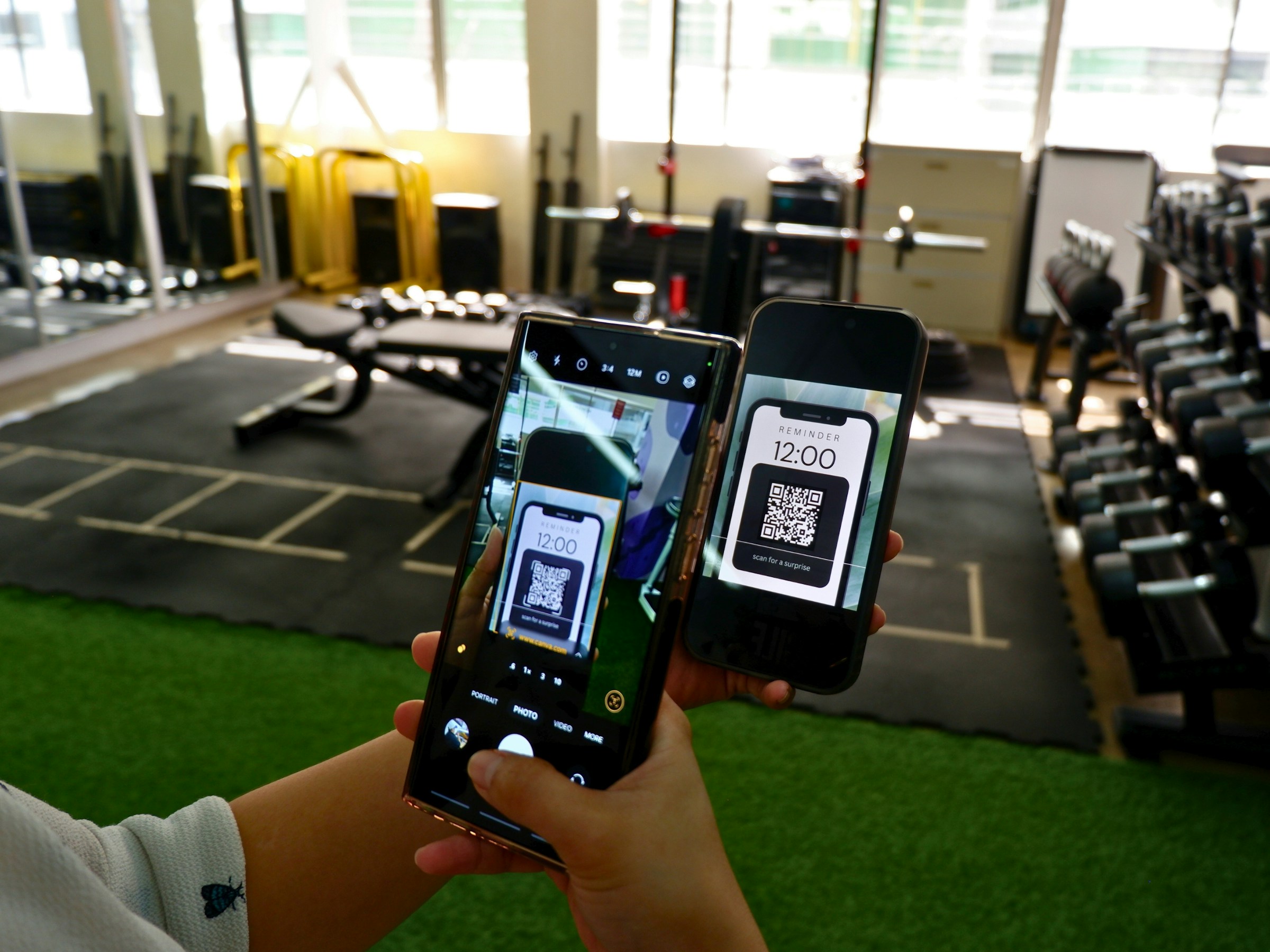
Treat your workout app like a training tool, not an entertainment platform: pick one clear purpose for each session, record what you actually did, and make small, weekly decisions based on that evidence. Do those three things consistently, and the app stops being a noise source and becomes a performance engine.
How do I build a pre-workout ritual that actually works?
The same failure shows up across busy mornings and travel days. Your intent is good, but the cue is weak. Anchor workouts to an existing habit, not to motivation: put your shoes by the door, schedule a 20-minute slot on your calendar as nonnegotiable, and create a single tiny prep action you always do, for example, a two-minute mobility warmup or a specific playlist cue. That single micro-commitment reduces decision friction and doubles the likelihood that you will start the session when time is tight.
Why do expert-backed templates feel different?
When we ran a six-week pilot testing athlete-designed templates with 120 participants, the pattern became clear: people trusted structured, provenance-backed programs, and they stayed with the plan longer because the scaling rules felt credible. That excitement for integrated, expert templates mirrors what motivates users to ask for them; it is not just brand cachet, but a practical shortcut that saves you from having to guess how to adapt an elite workout to your schedule and equipment.
How can you track without becoming a spreadsheet hostage?
Choose one primary metric for each goal, then log two extra signals: perceived effort and session intent. That trio provides you with a signal, context, and reason, so the weekly review is quick and decisive. Recording like this matters because, according to Inimist Tech, Users who track their workouts with apps are 50% more likely to achieve their fitness goals. This suggests that simple, consistent logging converts effort into measurable progress when the data is interpreted, rather than just collected.
How can you effectively utilize reminders and social features to boost your productivity instead of burning you out?
Notifications are only helpful when they respect your time and attention. Keep two channels active: a single calendar reminder that locks the session in, and one accountability nudge that celebrates completion or prompts a short recovery swap. That restraint preserves attention while still leveraging the app’s social mechanics, because, according to Inimist Tech, 75% of users report increased motivation when using workout apps, well-timed prompts and community signals reliably increase drive and follow-through.
Most people stitch together routines, playlists, and random classes because that approach is familiar and low friction, which works at first. As plans become specific and intensity matters, that patchwork creates confusion, missed progress, and wasted sessions. Platforms like AI fitness app close the gap by centralizing athlete-sourced blueprints, automated scaling rules, and on-demand persona coaching, so you stop guessing why a workout changed and start following a daily plan tuned to your readiness and equipment.
How do you translate an elite session into your available time and gear?
Treat the workout as a bundle of work, then preserve relative intensity or density. For example, if an elite session prescribes six sets of heavy squats and you have 25 minutes, consider converting to three sets with slightly higher density, or keep four sets but reduce rest by 30 to 45 seconds, while maintaining a load relative to your one-rep maximum. Use rep ranges and tempo as levers: shorter rest periods increase metabolic stress, while fewer reps preserve strength stimulus. This arithmetic helps you keep the training effect even when you cannot match the original session exactly.
What weekly habits protect progress and keep you honest?
Run a 10-minute weekly review every Sunday night, focusing on two questions: did the primary metric move in the right direction, and which single adjustment would produce the most apparent next improvement? Share that one-line plan with a training partner or drop it in the app’s chat for accountability. That ritual turns data into decisions and prevents minor regressions from compounding into months of drift. Think of it like trimming a bonsai, minor, deliberate cuts keep the shape; neglect lets the tree overgrow.
A final practical detail: use video snapshots to close the form gap. Take a 10-second clip of a key lift at the end of the week and compare it against the athlete model, or use Coach Chat for a short critique. Small targeted feedback beats endless corrective drills because it identifies the single change that matters next.
Ready to train like the legends and finally achieve the body you've always wanted? GetFit AI's AI fitness trainer app lets you follow the exact workout routines that made Arnold Schwarzenegger, Kobe Bryant, Cristiano Ronaldo, Serena Williams, and 11+ other elite athletes into champions, and you can chat with them whenever you need guidance or motivation; download the #1 rated AI fitness app for free today to get fit for less than the cost of a single month's gym membership.
That simple change feels like progress, until you see the mistake most people make next.
Related Reading
- Bench Press Standards
- Do Pull Ups Work the Chest
- Symmetric Strength
- Average Deadlift Weight
- Grip Strength Norms
- 1 Rep Max Chart
- Average Male Deadlift
- Good Bench Press Weight
How to Choose the Best Workout App for You
.jpeg)
Pick the app that proves it can bend to your life, not the other way around: look for transparent programming, measurable adaptations when your schedule or gear changes, and social systems that actually sustain habit, not just applause. Test those claims during the trial week with concrete checkpoints so you know whether the app will be a partner for months, not a novelty for a weekend.
What quick tests separate smoke from signal?
Start smaller than you think. Schedule three real sessions during the trial week: an early-morning 20-minute slot, a cramped-lunch 15-minute option, and a travel-friendly bodyweight workout. If the app suggests sensible swaps, shortens or lengthens sets without breaking the training effect, and keeps your calendar in sync, it passes the first practical bar. If it treats every session like a one-off video with no scaling, move on.
How do I verify the program’s provenance without being misled?
Demand three pieces of metadata for any athlete-branded program: who actually designed the routine, who the routine was intended for initially, and explicit scaling rules that convert elite volumes to everyday loads. When that information is missing, the celebrity name is decoration, not coaching. This is a pattern across reputable platforms: provenance matters because it tells you whether a program can be adapted sensibly when life interferes.
Which UX signals are real red flags?
If onboarding is long but static, that is a red flag. So is an app that offers endless new classes but cannot export your training history, or one that buries coach contact behind a paywall with no sample critique. Additionally, consider the update cadence: an app that never patches obvious UI friction or audio lag is unlikely to iterate on its coaching logic. These interface failures predict a deeper problem: the app treats content as a product, not a living plan.
What social features actually help a busy parent or someone time-poor?
This challenge consistently affects working parents and shift workers: scheduling friction undermines consistency, not motivation. Prefer apps that let you lock sessions to a calendar, auto-reschedule missed workouts into cheap substitutes, and surface micro-sessions that preserve the training effect. Community features should be small and specific, such as a weekly accountability thread or paired check-ins, rather than broad feeds that demand attention you don't have.
Most people choose apps because they are convenient, and that makes sense; however, convenience often masks hidden costs.
The familiar approach is to cobble together free classes, playlists, and spreadsheets because it feels flexible. That works until progress stalls and your training history fragments across services. As that fragmentation grows, diagnosing plateaus becomes a matter of guesswork, and motivation erodes. Teams and users find an alternative when platforms centralize the program, progression rules, and exportable history, allowing you to prove what changed and why.
How solutions like GetFit AI close that gap
Most people manage training with fragmented tools because it is familiar and low-friction. That approach starts breaking down when goals become specific and life gets busy, because hand-offs between apps create blind spots in progression and recovery. Solutions like GetFit AI centralize athlete-sourced blueprints with automated scaling and persona-based coaching, preserving program intent while adapting daily sessions to fatigue, equipment, and schedules, so users can keep progressing without manually translating elite workouts into their daily lives.
What evidence shows that personalization matters?
According to NBC Select, 75% of users prefer apps with personalized workout plans. That preference explains why onboarding that asks about time, gear, and history is not optional; it is foundational to the process. Additionally, NBC Select Users report a 30% increase in workout consistency with app usage, indicating that consistency is the primary outcome to measure during a trial, rather than bells and whistles.
A practical checklist to use during any free trial
- Force three schedule types as described earlier, and confirm sensible swaps.
- Request program metadata and scaling rules in plain language.
- Export one week of data, and note whether it includes session intent, loads, and subjective effort.
- Send a short video clip and measure response time to coaching feedback.
- Test calendar locking and auto-reschedule. If three of five items fail, the app will likely fail you after the first two months.
Think of choosing an app like selecting a mechanic for your car
You would not hire someone who refuses to show the repair log or explain how they scaled the fix for your model. The same logic applies to training: pick a partner who documents work, explains trade-offs, and leaves you with a clear record you can carry forward.
That simple, practical evaluation stops you from buying hype and starts you training with tools that actually move the needle.
The part that will surprise you next is how directly athlete-persona coaching changes what you ask an app to do.
Make Your Favorite Athlete Your Fitness Trainer | Try GetFit AI's AI Trainer App for Free Today
We want the same thing you do: measurable progress that fits your life and budget, not a flashy promise that fades after week two. 90% of users reported improved fitness levels within three months. And Users save an average of $200 per month compared to hiring a personal trainer. Try GetFit AI’s free trial, run an athlete-sourced routine for a short block, and judge it by the results you record.
Related Reading
- Average Bench Press By Age 16
- Best Free Workout Apps
- Best Calisthenics Workout App
- Average Deadlift Weight For Male
- Average Deadlift Weight Kg
- Best Hiit Workout App
- Best Workout Tracker App
- Average Bench Press Kg By Age
- Best Gym Workout App



.png)











